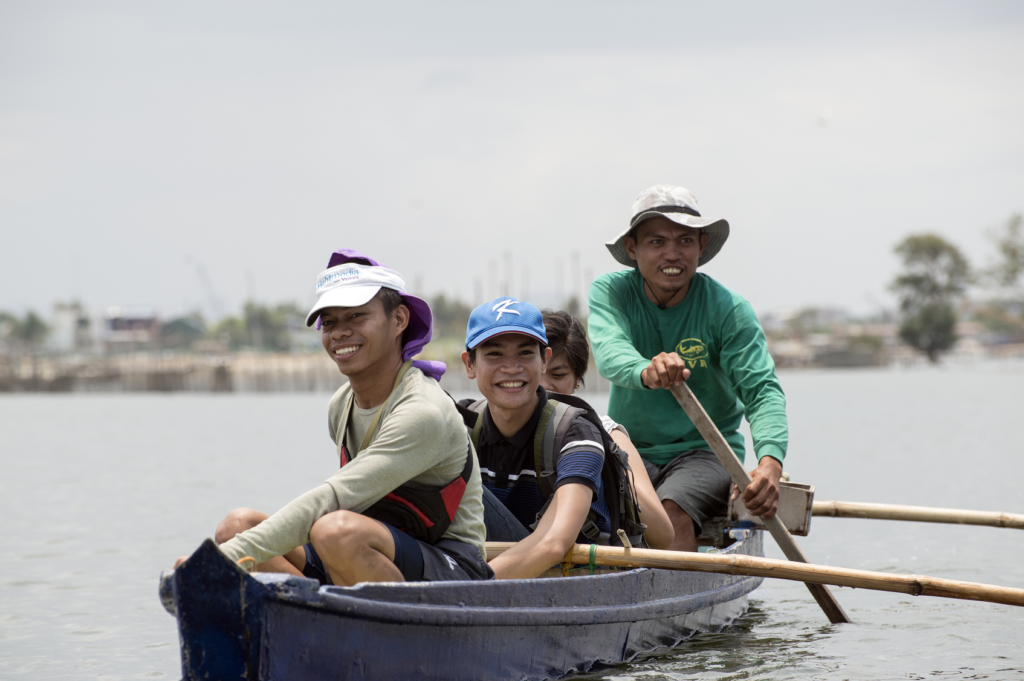Photo credit: Global Greengrants Fund
“We are not the first generation to have realized what’s at stake, but the last one to be able to provide a tomorrow that is resilient, just, and peaceful.”
Winnie Asiti coauthored this statement as a guest editor of the June 2021 issue of Alliance Magazine. Writing as the coordinator of the Next Generation Climate Board for Global Greengrants Fund (GGF), Asiti describes the responsibility taken on by many youth climate activists around the world. To her, too many of these young people are facing this daunting duty of trying to save the planet with minimal support.
In an interview with CJRF, Asiti describes why so few funders are willing to support youth activism.
“Most of the time, youth movements don’t have an office or a bank account. They are not registered,” Asiti said. “Instead, they are often a bunch of motivated young people trying to do something because they understand the urgency of this moment and are frustrated by the lack of action. Funders see the unestablished nature of these organizations as a risk.”
Launched in 2013, the Next Generation Climate Board funds youth-led action on climate change through grants to grassroots activists around the world. Far from seeing youth associations as a funding risk, the board believes it imperative to identify groups that, with the right support at the right time, can launch something long-lasting with a far reach. The board also uses grants to link groups to wider youth networks and supports these networks and regional approaches.
Right now, Asiti and other board members are researching various issues – like the engagement of diverse groups of young people, including women and feminists, youth with disability, indigenous and rural youth, and explores their contribution to climate resilience – with the goal of becoming a knowledge hub on youth-led movements that other GGF advisory boards, philanthropists and the wider environmental justice community can use.
Allison Davis, director of regional programs at GGF, says this learning is critical because youth have the most at stake and are the most willing to take risks. However, their willingness to take risks also means they need experienced mentorship and supportive networks to ensure their actions do not threaten their personal safety or severely limit their ability to carry on this work in the future.
“Philanthropists have a real responsibility to include the next generation in their efforts,” says Davis. “Youth voices need to be heard, first and foremost, and it is also critical to mentor these young leaders and give access to spaces where they grow in their lives and careers.”
Both Davis and Asiti hope that the learning and reflection on the Next Gen grantmaking efforts will provide valuable insights that enable funders to support youth-led movements more effectively. For example, as Asiti stated, many funders are reluctant to fund less established movements. The catalytic funding from the Next Generation Climate Board allows for just the right level of responsibility, seeding, and experience for many groups. At times it has allowed youth-led groups to register and unlock greater funding opportunities. Other funders could learn from this process.
The lessons shared by Asiti and the Next Generation Board are also ways that funders can support many grassroot organizations – not just youth-led ones. For instance, flexible funding that enables groups to adjust with conditions—as was critical during the outbreak of COVID-19; simplified reporting that enables groups to share outcomes in whatever format works for them; and participatory grantmaking that shifts power, is driven by demand, and enhances ownership could all bolster locally led climate action. Translating these learnings beyond youth-led spaces can have positive implications for other groups working on climate issues.
Youth-led action is not the sole answer to the climate crisis. The knowledge and experiences of people of all ages and identities are needed to address the challenges we face.
“Youth are part of the solution to everything, but everybody has a role,” Asiti states. “Youth live in a society with other people they need to learn from so that we can all exist in a better way and contribute to addressing the climate crisis.”
To illustrate, Asiti describes a Board-funded mangrove restoration effort in coastal Kenya. In this project, the elders are often the ones with experience in collecting seeds, growing, and eventually transplanting the mangroves. Funding allows for intergenerational learning so that younger generations can blend elders’ time-tested knowledge with new ways to carry this work into the future, such as using digital tools or podcasts to capture interactions and share their experiences with community members. It’s a powerful combination that requires everyone bring their strengths together.
The findings of the Next Generation Climate Board’s research will be published in 2021. The CJRF looks forward to incorporating these lessons into our funding strategy and sharing them with others so that youth movements receive the support they need to push us all forward into a better, more just future.

